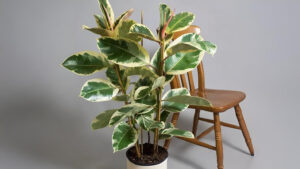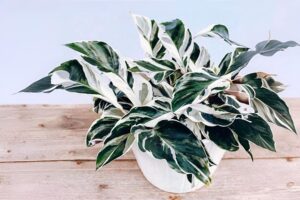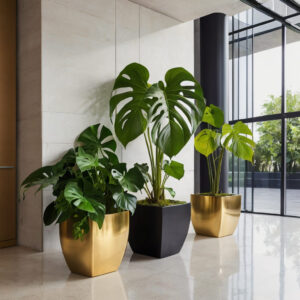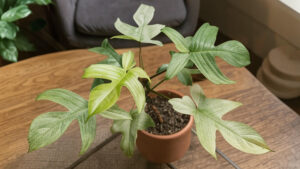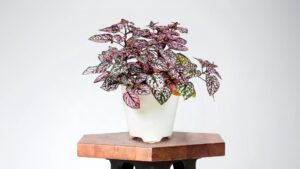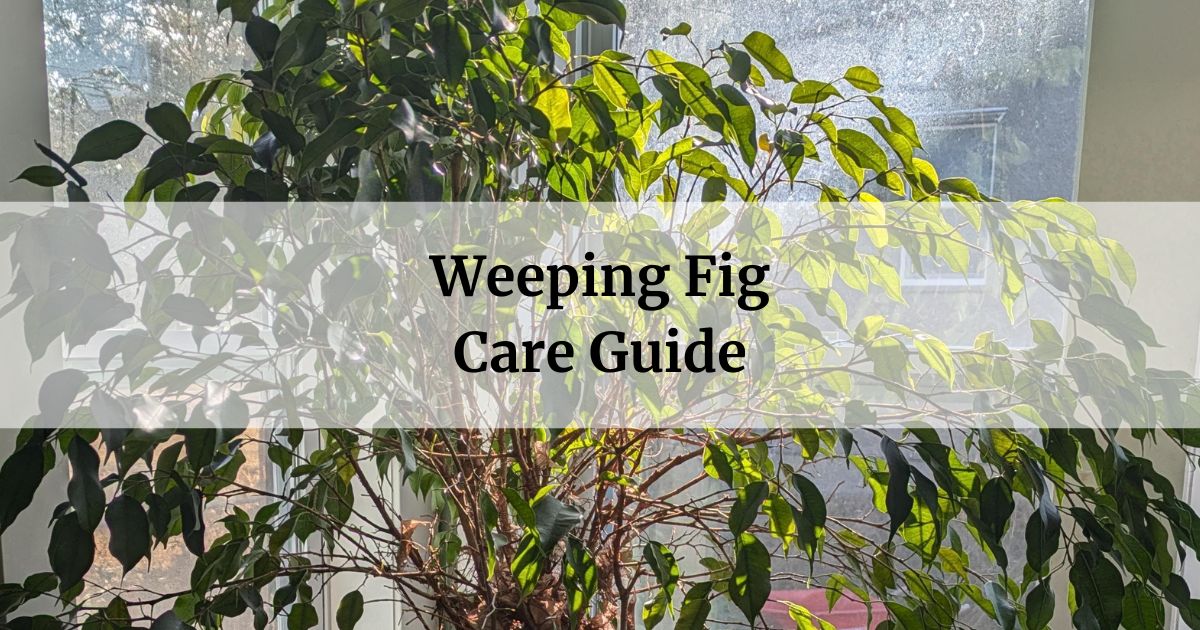
The Weeping Fig (Ficus Benjamina) is a stunning houseplant that can instantly elevate the ambiance of any room. With its graceful, cascading branches and glossy, green leaves, this plant can transform your living space into a peaceful oasis.
- Pros
- Elegant and eye-catching appearance
- Easy to care for and low maintenance
- Air-purifying properties
- Can grow to impressive sizes
- Cons
- Can be sensitive to changes in environment
- Leaves may drop if not cared for properly
- Potential toxicity to pets if ingested
In this article
- 1 Appearance of the Weeping Fig
- 2 Light Requirements for the Weeping Fig
- 3 Watering the Weeping Fig
- 4 Fertilizing the Weeping Fig
- 5 Potting the Weeping Fig
- 6 Propagation of Weeping Fig
- 7 Growth and Development of the Weeping Fig
- 8 Managing Pests and Diseases for the Weeping Fig
- 9 Complimentary Plants with your Weeping Fig
Appearance of the Weeping Fig
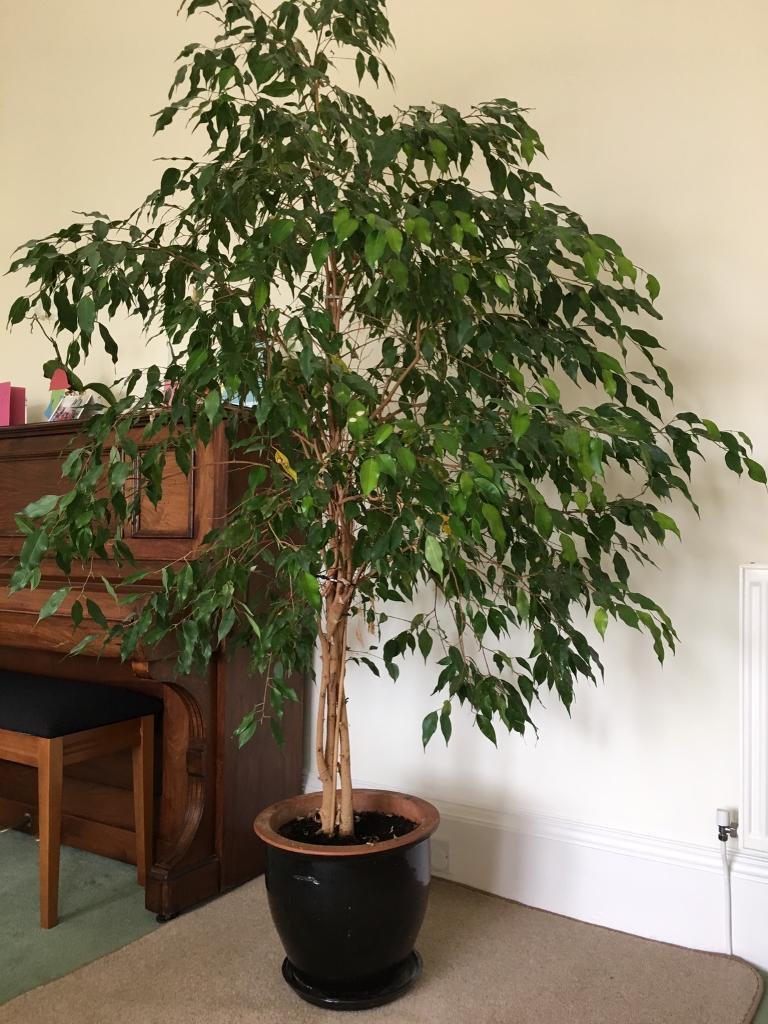
The Weeping Fig is a true stunner with its lush, verdant foliage and distinctive drooping branches. The leaves are oval-shaped, glossy, and range in size from 2 to 4 inches long. As the plant matures, the leaves develop a slightly wavy or ruffled texture, adding to its captivating appearance.
One of the most striking features of the Weeping Fig is its ability to grow into a large, tree-like specimen, with a graceful, cascading silhouette. In the right conditions, this plant can reach heights of up to 10 feet, making it a statement piece in any room.
Great for People who:
Want to add a touch of tropical elegance to their home and appreciate the calming presence of a low-maintenance plant.
Great for these Spaces:

The Weeping Fig thrives in rooms with higher ceilings, as it can reach impressive heights and spreads. It’s an excellent choice for large living rooms, atriums, or open-concept spaces.
Caring for Weeping Fig
The Weeping Fig is generally considered a beginner-friendly plant, as it is relatively easy to care for. However, it does require some attention to its specific needs, such as consistent watering and proper light conditions.
Toxicity Level of Weeping Fig
The Weeping Fig is considered toxic to both pets and humans if ingested. The milky sap that the plant produces can cause irritation and, in some cases, more serious health issues if consumed. It’s essential to keep this plant out of reach of curious pets and young children, and to thoroughly wash your hands after handling it.
Light Requirements for the Weeping Fig
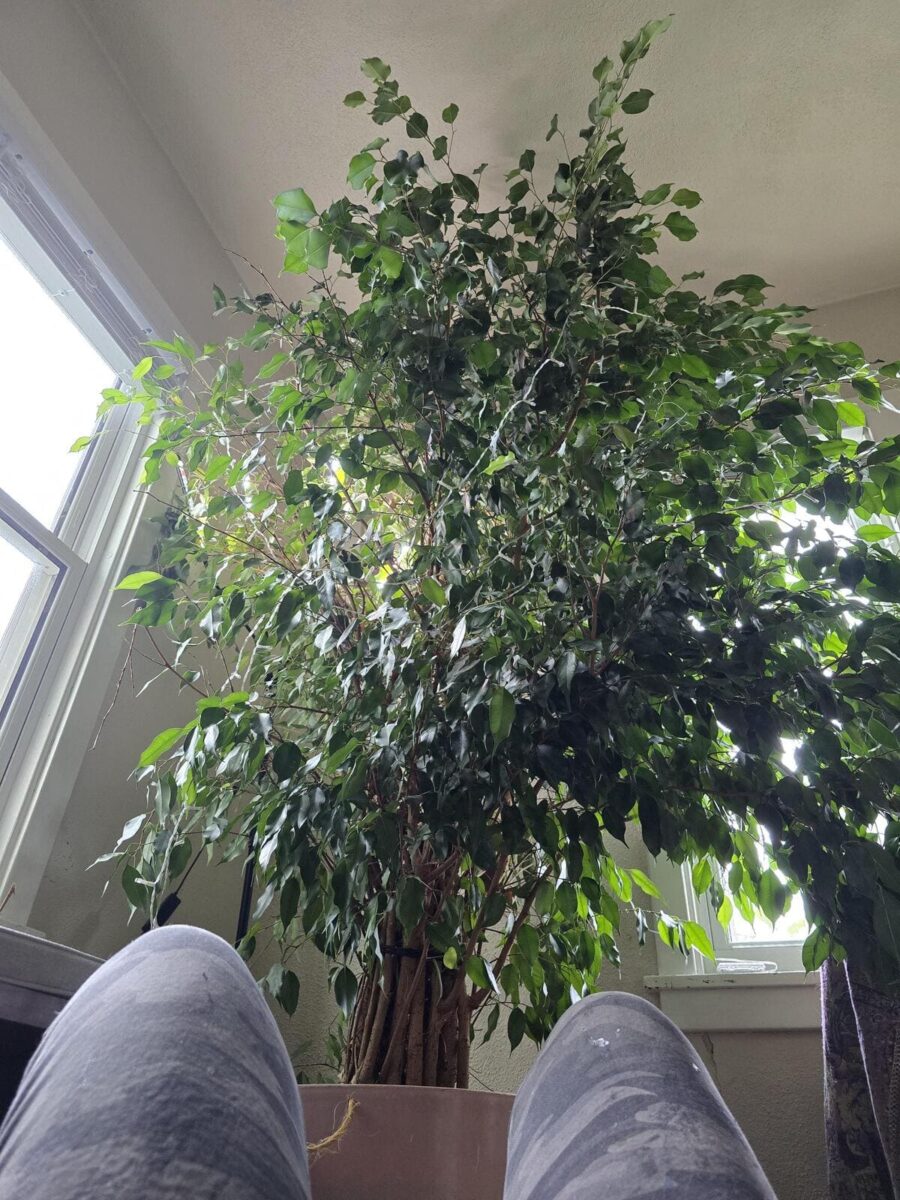
The Weeping Fig thrives in bright, indirect light. It can tolerate some direct sunlight, but prolonged exposure to harsh, direct rays can lead to leaf scorch and discoloration.
| Light Conditions | Effect on Weeping Fig |
|---|---|
| Bright Indirect Light | Promotes lush, healthy growth |
| Low Light | Can cause the plant to become leggy and lose leaves |
| Direct Sunlight | May lead to leaf damage and discoloration |
If your Weeping Fig is not receiving enough light, consider supplementing with a grow light to ensure it receives the necessary illumination.
Watering the Weeping Fig
The Weeping Fig requires consistent watering, but it’s important to avoid overwatering. As a general rule, allow the top inch or two of the soil to dry out before watering again.
Here are some tips for watering your Weeping Fig:
- Check the soil moisture regularly by sticking your finger into the soil.
- Water the plant thoroughly, allowing the water to drain completely from the bottom of the pot.
- Avoid letting the plant sit in standing water, as this can lead to root rot.
- Adjust watering frequency based on the plant’s needs, as it may require more or less water depending on factors like temperature and humidity.
Fertilizing the Weeping Fig
The Weeping Fig benefits from a balanced, water-soluble fertilizer applied during the growing season. Follow these guidelines for fertilizing your Weeping Fig:
| Month | Recommended Dosage |
|---|---|
| Spring (March-May) | Apply a balanced fertilizer at half-strength |
| Summer (June-August) | Apply a balanced fertilizer at full strength |
| Fall (September-November) | Apply a balanced fertilizer at half-strength |
| Winter (December-February) | Avoid fertilizing, as the plant is in a dormant state |
Be sure to follow the manufacturer’s instructions carefully and avoid over-fertilizing, as this can lead to leaf damage or other issues.
Potting the Weeping Fig
The Weeping Fig prefers a well-draining potting mix and a pot with ample drainage holes. When repotting, choose a container that is only slightly larger than the previous one, as the plant prefers to be slightly root-bound.
Here are some tips for potting your Weeping Fig:
- Use a high-quality, well-draining potting mix specifically formulated for houseplants.
- Choose a pot with ample drainage holes to prevent waterlogging.
- Gently remove the plant from its current pot and place it in the new container, being careful not to damage the roots.
- Fill in the sides with the potting mix, ensuring the soil level is the same as the previous pot.
- Water thoroughly after potting to help the plant settle in.
Propagation of Weeping Fig
Propagating a Weeping Fig can be a fun and rewarding experience. I’ve had great success with taking stem cuttings and rooting them in water. Here’s a step-by-step guide on how I do it:
- Choose a healthy, mature stem with several leaves and cut it just below a leaf node, using clean, sharp scissors.
- Remove the lower leaves, leaving only the upper ones intact.
- Place the cutting in a clean glass or jar filled with water, ensuring the leaf node is submerged.
- Keep the cutting in a warm, well-lit area, out of direct sunlight, and change the water weekly.
- Within 4-6 weeks, you should see the development of roots. Once the roots are a few inches long, you can transplant the cutting into a small pot filled with well-draining potting mix.
- Water the newly potted cutting and keep it in a warm, humid environment until it becomes established.
Growth and Development of the Weeping Fig
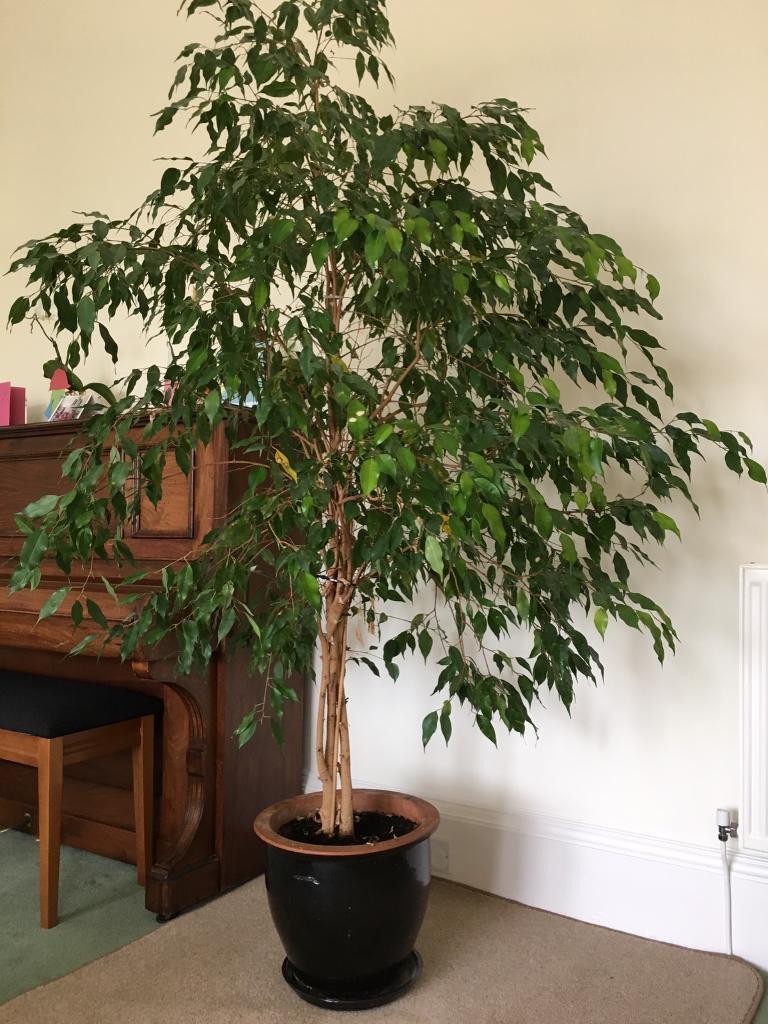
The Weeping Fig thrives in warm, humid environments with consistent, bright, indirect light. In the United States, the best time of year to grow this plant is during the spring and summer months, when the weather is mild and the days are longer.
It’s important to maintain the optimal temperature range of 65-85°F for the Weeping Fig to grow and thrive. Avoid sudden temperature changes, as this can cause the plant to shed its leaves.
Regular cleaning of the Weeping Fig’s leaves is also essential. Use a soft, damp cloth to gently wipe down the foliage, removing any dust or debris that can accumulate and impede the plant’s ability to photosynthesize effectively.
Managing Pests and Diseases for the Weeping Fig
The Weeping Fig can be susceptible to a few common houseplant pests, such as spider mites, scale insects, and mealybugs. If you notice any signs of infestation, act quickly to address the issue before it becomes a larger problem.
To prevent and manage pests, regularly inspect the plant, especially the undersides of the leaves, for any signs of trouble. If you do encounter pests, try using a gentle, plant-safe insecticidal soap or neem oil solution to eliminate them.
In terms of diseases, the Weeping Fig can be prone to root rot if the soil is consistently too moist. Ensure that the potting mix is well-draining and that you’re not overwatering the plant.
Complimentary Plants with your Weeping Fig
The Weeping Fig can pair beautifully with other lush, tropical-inspired plants. Some great companions include:
These plants not only complement the Weeping Fig’s elegant appearance but also share similar care requirements, making them easy to incorporate into a cohesive indoor plant collection.
Frequently asked questions
How much sunlight does a Weeping Fig need?
The Weeping Fig thrives in bright, indirect light. It can tolerate some direct sun, but too much exposure can lead to leaf damage.
How often should I water my Weeping Fig?
Water the Weeping Fig when the top inch or two of soil has dried out. Avoid overwatering, as this can lead to root rot.
Is the Weeping Fig toxic to pets?
Yes, the Weeping Fig is considered toxic to both pets and humans if ingested. The milky sap can cause irritation, so it’s important to keep the plant out of reach of curious animals and children.
The Weeping Fig is a captivating houseplant that can bring a touch of tropical elegance to any home. With its graceful, cascading silhouette and glossy, green foliage, this plant is sure to become a focal point in your living space. By following the care guidelines outlined in this guide, you can ensure your Weeping Fig thrives and continues to delight you for years to come.
